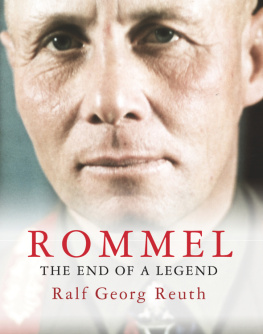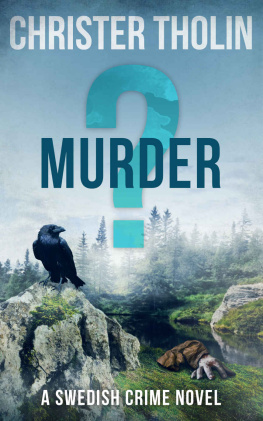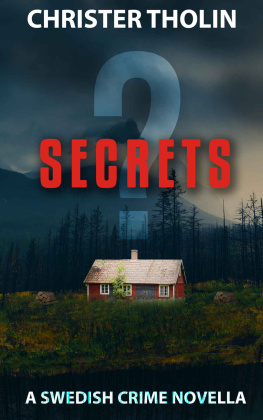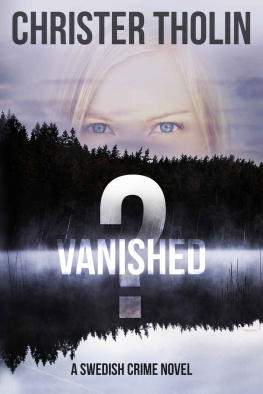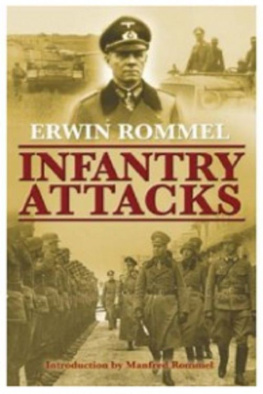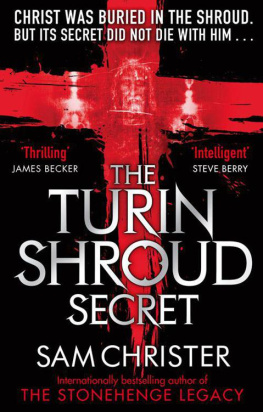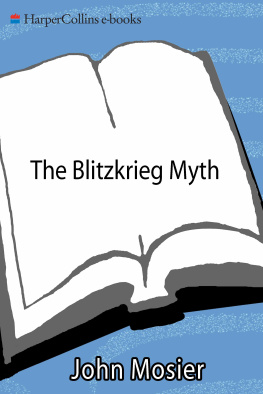Christer Jörgensen - Rommel: Master of Blitzkrieg (Classic Texts)
Here you can read online Christer Jörgensen - Rommel: Master of Blitzkrieg (Classic Texts) full text of the book (entire story) in english for free. Download pdf and epub, get meaning, cover and reviews about this ebook. year: 2015, publisher: German War Machine, genre: History. Description of the work, (preface) as well as reviews are available. Best literature library LitArk.com created for fans of good reading and offers a wide selection of genres:
Romance novel
Science fiction
Adventure
Detective
Science
History
Home and family
Prose
Art
Politics
Computer
Non-fiction
Religion
Business
Children
Humor
Choose a favorite category and find really read worthwhile books. Enjoy immersion in the world of imagination, feel the emotions of the characters or learn something new for yourself, make an fascinating discovery.

- Book:Rommel: Master of Blitzkrieg (Classic Texts)
- Author:
- Publisher:German War Machine
- Genre:
- Year:2015
- Rating:5 / 5
- Favourites:Add to favourites
- Your mark:
- 100
- 1
- 2
- 3
- 4
- 5
Rommel: Master of Blitzkrieg (Classic Texts): summary, description and annotation
We offer to read an annotation, description, summary or preface (depends on what the author of the book "Rommel: Master of Blitzkrieg (Classic Texts)" wrote himself). If you haven't found the necessary information about the book — write in the comments, we will try to find it.
Rommel: Master of Blitzkrieg (Classic Texts) — read online for free the complete book (whole text) full work
Below is the text of the book, divided by pages. System saving the place of the last page read, allows you to conveniently read the book "Rommel: Master of Blitzkrieg (Classic Texts)" online for free, without having to search again every time where you left off. Put a bookmark, and you can go to the page where you finished reading at any time.
Font size:
Interval:
Bookmark:

Unit identifiers are located on the right-hand side of the unit symbol. The upper line is the unit number, or an abbreviated version of the units name if it did not have a number (eg. RTR for the Royal Tank Regiment, Gds. for the Guards Armoured Division, or Pz. Lehr for the Panzer Lehr Division). The lower line contains additional information about the unit. This can be the nationality of the unit for British commonwealth armies (Pol. for Polish, Can. for Canadian, and Brit. for British), or an indication of its type (eg. SS for Waffen-SS, VG for Volksgrenadiers or AG for Assault Gun). Ad hoc formations are marked with the abbreviation TF for Task Force (US) or KG for Kampfgruppe (German). The symbol (-) indicates that one or more of a formations component units had been detached.
Occasionally there will be a set of numbers on the left-hand side of the symbol. These indicate the parent unit (if marked on a regiment, for example, they would indicate the brigade that the regiment was part of).
Each chapter of this book opens with a high-quality contemporary photograph. Click or tap on the photograph to see a detailed caption, then click or tap on the 'return' link to go back to the chapter. If your e-reader does not allow internal links, the caption pages can usually be found at the very end of the book, beyond the imprint page.
The maps used in this book are high-resolution images, so on reading systems where zooming is supported it should be possible to examine them in detail by clicking or double-tapping on them. We cannot guarantee easy readability on older readers or readers with relatively low-resolution screens, however. If you are unable to examine the maps in detail, high quality versions, along with other additional content, can be found at www.germanwarmachine.com
During the darkest days of World War II (early 1942) the British Prime minister and war leader, Winston Churchill, usually an optimistic, self-confident and ebullient character, was brought to despair by British setbacks in the Desert War in North Africa at the hands of his countrys worst enemy: the Desert Fox. The Fox was none other than General Erwin Rommel, the commander of the German Africa Corps whose prowess in war inflicted defeat upon defeat on the British. In early 1942 Churchill shouted to his aides: Rommel, Rommel, Rommel what matters but beating him.
For Churchill, defeating Rommel became an obsession that would dominate his conduct of the war during 1941 and 1942. So desperate was he to rid himself of this German thorn in his side that he allowed himself to be persuaded to launch a most secret and clandestine operation to take place: to abduct or kill Rommel in his African headquarters. The operation, launched in November 1941, failed.
No German general, before or since, had been the subject of such praise by the British, or such calculated acts of vengeance, as the Fox. What made Rommel so special? He had been an outstanding infantry commander during World War I with a string of spectacular Alpine victories to his name. The hallmark of his style of command was to lead from the front and pursue the enemy mercilessly, through daring thrusts and attacks, until the foe was forced to capitulate. Rommel, appointed to command the legendary 7th Panzer Division in early 1940, proved a born leader of men and proved during the French campaign (MayJuly 1940) that he was an outstanding panzer commander. Even though Rommel came out of that campaign with an enhanced reputation for bold and imaginary leadership, it was in North Africa that he became the legendary Desert Fox. It was in Africa that he and his men of the equally legendary Deutsche Afrika Korps (DAK) outfought, outsmarted and outmanoeuvred the British again and again during a series of brilliantly fought battles. The British recognized that they were dealing with an exceptionally talented and tough army led by a military genius. Indeed, once the Fox had been defeated the British, good sportsmen that they were, lavished praise on him and the DAK.
To friend and foe alike Rommel was a gentleman warrior, a tough but humane professional soldier, who fought for his country and his soldiers whatever the odds stacked against him. He inspired enormous loyalty in those who served under him and even won the admiration of his enemy the highest form of praise there is and in the end let his patriotism and loyalty to his country override his sense of gratitude to the man who in part had created him. But at all times Rommel was a warrior at heart and a soldiers general. We are very unlikely to see his like again.
This is the story of Rommel, his panzers and the men who fought under his command on two continents and in two world wars.
Family and background have a great influence on later life since they create the mould that shapes an individual. Erwin Rommel was born in 1891 in the small south German region of Swabia, whose inhabitants were known for their dour, hard-working and tenacious characters. During his long military career, Rommel showed exactly these qualities of endurance, toughness and ingenuity. He also retained throughout his life a strong regional patriotism and his distinct Swabian accent, despite living in other parts of Germany.
Rommels father, a strict and demanding schoolmaster, instilled in the boy good Protestant values such as hard work, discipline, loyalty and patriotism. He was also responsible for his son becoming a soldier, and in July 1910 Rommel joined the 124th Wrtemburg Infantry Regiment (Swabia then being part of the Kingdom of Wrtemburg). A year later he passed out of the Danzig Cadet School, and the commandant noted that officer cadet Rommel was a useful soldier. He had immense willpower, was keen and enthusiastic [and had] a strict sense of duty and a very comradely attitude.
At this time, Rommel met, fell in love with and married the love of his life, Lucie Mollin, a dark-haired German beauty of Italian and Polish descent. She was to be his companion for the rest of his life, and he returned her support with undying affection and devoted loyalty.
Rommels regiment was stationed near Stuttgart where he trained recruits until, in March 1914, he was attached to the 49th Field Artillery Regiment. World War I broke out in August 1914. Rommels regiment was part of the German Fifth Army that invaded eastern France in the region of the southern Ardennes, an area with which Rommel would become very familiar during his later French campaign in World War II.
He relished the mobile phase of the war and conducted operations as if he were a cavalry, not an infantry, commander. On 22 August, he captured the village of Blied with a small detachment, killing 30 and taking 12 French prisoners. For his personal bravery and the dash of his troops, Rommel was awarded the Iron Cross II Class. Like a bloodhound, he had a nose for the enemys weakness. He was always keen to attack, and took charge of operations himself often to the fury of his superiors. He believed in initiative and independence, even at the expense of strict hierarchical discipline.
In September 1915, Rommel joined the Wrtemburg Mountain Battalion. It was while in service with this unit that he became an independent and bold commander of men in the most arduous of circumstances. The Kingdom of Romania, after some indecision, had joined the Allies in late August 1916 and had invaded the Romanian-populated province of Transylvania. Victorious at first, the Romanians, badly led and poorly supplied, were defeated when Germany sent its beleaguered ally, Austria-Hungary, military support. Shaped like a triangular wedge, Rumania was surrounded by enemy territory to the south (Bulgaria) and the Austro-Hungarian Empire to the north. While the Bulgarians crossed the Danube in force, thus threatening the whole southern part of Romania, an Austro-German army under General Falkenhayn invaded Romania from the northwest through the passes of the Transylvanian Alps. It was able to outflank and defeat the enemy, despite Russian support for the Romanians. On 6 December 1916, the capital, Bucharest, fell to Falkenhayn.
Font size:
Interval:
Bookmark:
Similar books «Rommel: Master of Blitzkrieg (Classic Texts)»
Look at similar books to Rommel: Master of Blitzkrieg (Classic Texts). We have selected literature similar in name and meaning in the hope of providing readers with more options to find new, interesting, not yet read works.
Discussion, reviews of the book Rommel: Master of Blitzkrieg (Classic Texts) and just readers' own opinions. Leave your comments, write what you think about the work, its meaning or the main characters. Specify what exactly you liked and what you didn't like, and why you think so.

